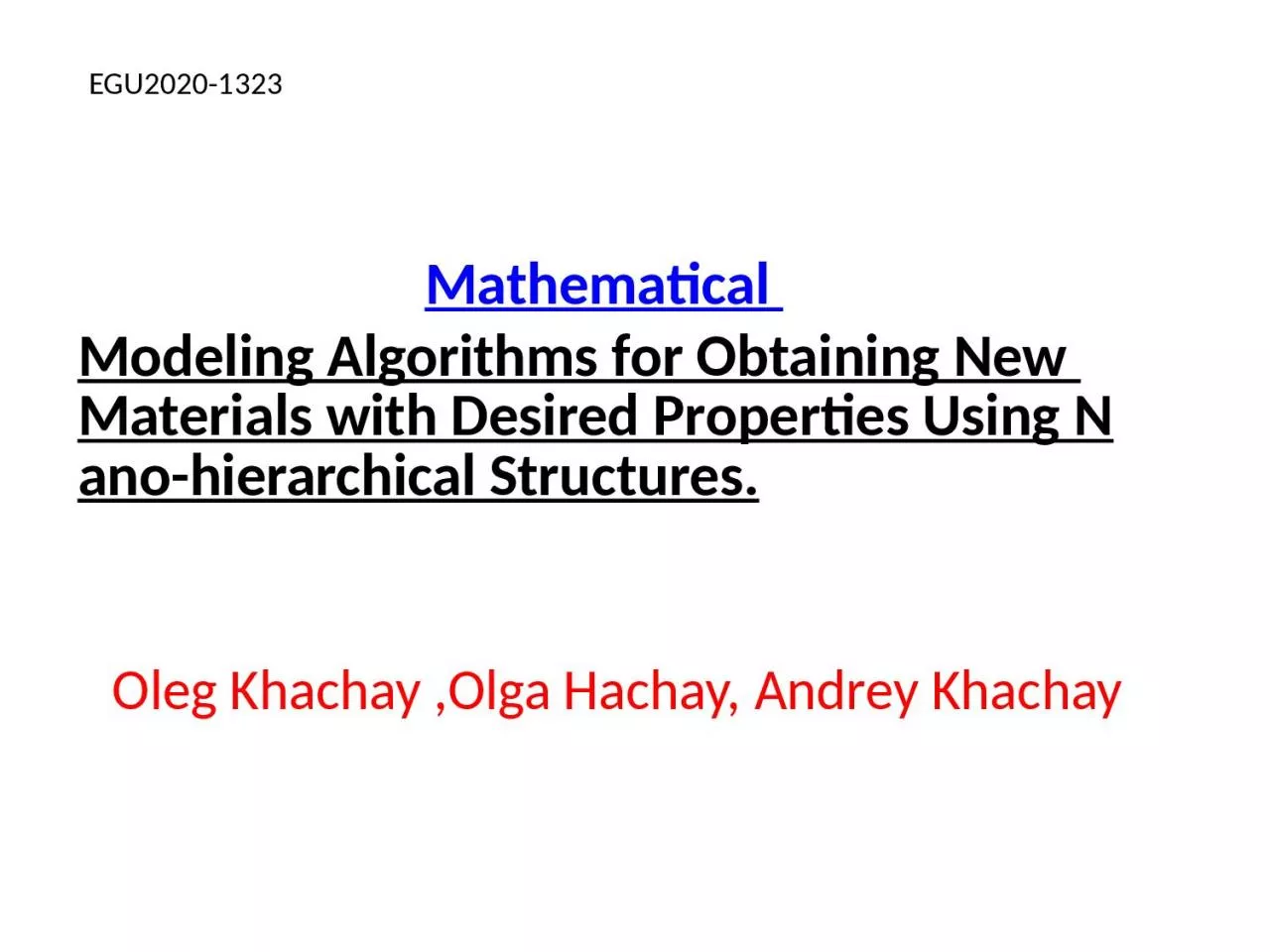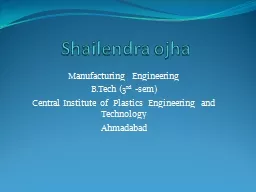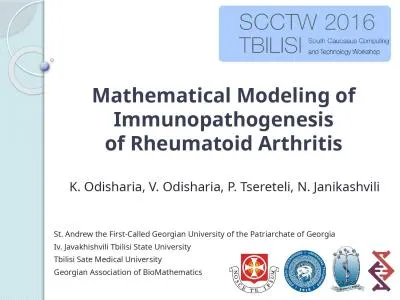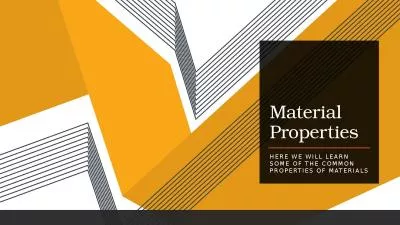PPT-Mathematical Modeling Algorithms for Obtaining New Materials with Desired Properties
Author : rosemary | Published Date : 2023-05-31
Oleg Khachay Olga Hachay Andrey Khachay EGU20201323 Abstract In the enormous and still poorly mastered gap between the macro level where well
Presentation Embed Code
Download Presentation
Download Presentation The PPT/PDF document "Mathematical Modeling Algorithms for Ob..." is the property of its rightful owner. Permission is granted to download and print the materials on this website for personal, non-commercial use only, and to display it on your personal computer provided you do not modify the materials and that you retain all copyright notices contained in the materials. By downloading content from our website, you accept the terms of this agreement.
Mathematical Modeling Algorithms for Obtaining New Materials with Desired Properties: Transcript
Download Rules Of Document
"Mathematical Modeling Algorithms for Obtaining New Materials with Desired Properties"The content belongs to its owner. You may download and print it for personal use, without modification, and keep all copyright notices. By downloading, you agree to these terms.
Related Documents














